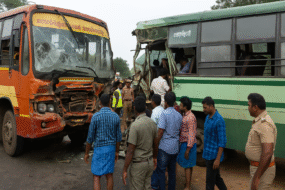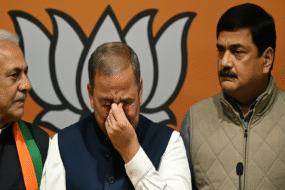Nashik-Trimbakeshwar Kumbh Mela 2026-28: Ritual Calendar and ₹6,000 Crore Development Plan Unveiled
The Maharashtra government has officially announced the schedule for the upcoming Simhastha Kumbh Mela in Nashik and Trimbakeshwar, one of Hinduism’s largest spiritual gatherings, set to begin on October 31, 2026 with the ceremonial Dhwajarohan (flag hoisting).
The major ritual bathing days — or Amrut Snan — have been fixed as:
- August 2, 2027 (First Snan)
- August 31, 2027 (Second Snan)
- September 11, 2027 (Nashik) and September 12, 2027 (Trimbakeshwar) (Third Snan)
The Kumbh Mela will officially conclude with the Dhwajapatan (flag lowering) on July 24, 2028. Traditionally held once every 12 years, the previous Kumbh was conducted in 2015-16.
Chief Minister Devendra Fadnavis, who chaired the planning meeting with sadhus and mahants from all 13 Akharas, assured that the upcoming mela would be “historic and awe-inspiring.” A total of ₹6,000 crore has been allocated for development, including:
- Sewage treatment and Godavari river rejuvenation
- Land acquisition for ‘Sadhugram’ settlements
- City-wide road and infrastructure upgrades
Fadnavis emphasized ample preparation time, unlike in 2015, will help deliver a safer, better-organized event. Crowd control measures are being prioritized, with the government urging pilgrims to spread their visits across multiple bathing dates to prevent overcrowding.
Unique to Nashik-Trimbakeshwar, the Vaishnav and Shaiva Akharas bathe separately — adding further logistical considerations. In response to a seer’s request, the CM also agreed to adopt the term Amrut Snan instead of Shahi Snan, aligning with terminology used in Prayagraj.
District Collector Jalaj Sharma said there would be 44 auspicious bathing events in Nashik and 53 in Trimbakeshwar, including major days such as Ekadashi, Purnima, and Amavasya.
Significant emphasis is also being placed on preserving religious heritage. A ₹681 crore development plan is underway for Choundi, the birthplace of Ahilyadevi Holkar, with restoration of ancient ghats.
The Kumbh Mela symbolizes India’s timeless spiritual legacy, drawing millions of pilgrims and sadhus from around the world. The Chief Minister affirmed that the event would reflect both grandeur and sanctity.
Trimbakeshwar, home to one of the 12 Jyotirlingas, and Nashik, believed to be part of Dandakaranya from the Ramayana, are considered among the holiest destinations in the Kumbh circuit.





